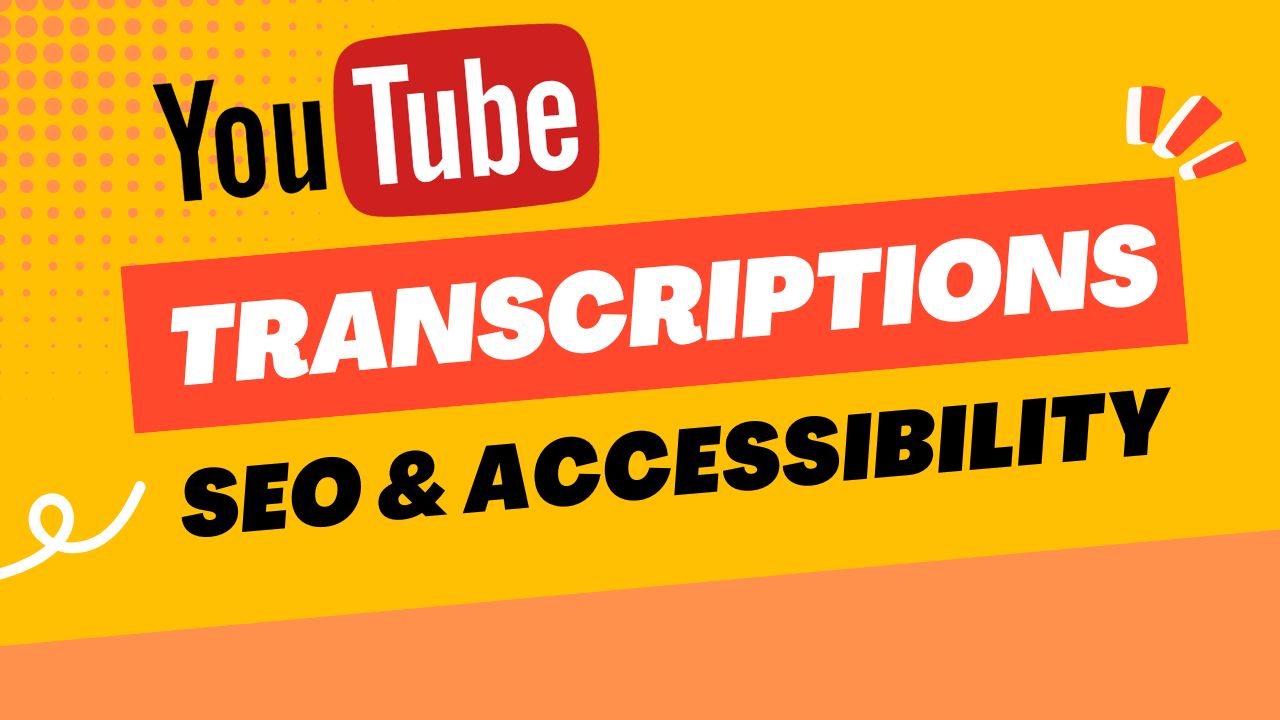
Adding subtitles in another language (e.g. a Spanish video with English captions, or an English video with Hindi subtitles) massively expands reach, improves accessibility, boosts watch time, and drives international SEO. In this guide we’ll break down the manual, freelance, and AI‑powered workflows—then show you how VidVerse AI makes high‑quality multilingual subtitles fast and affordable.
Why Multilingual Subtitles Matter
- Global reach: Unlock new audiences without re‑recording.
- Higher watch time: Viewers stay when they can read along in their native language.
- Accessibility & compliance: Helps deaf / hard‑of‑hearing viewers and non‑native speakers.
- Search & discovery: Extra language tracks surface in regional search and feed LLM / AI retrieval.
- Engagement & retention: Users can follow technical or accented speech more easily.
- Content repurposing: Translate once → reuse for blogs, shorts overlays, newsletters, social posts.
Internal metrics across YouTube education and commentary niches routinely show 5–15% additional viewership from adding a single high‑demand language (e.g. English ↔ Spanish, English ↔ Hindi) when published early in a video’s lifecycle.
Core Concepts
| Concept | Transcript | Captions | Subtitles | Translation |
|---|---|---|---|---|
| What it is | Raw text of spoken audio | Timed text (same language) | Timed text (different language) | Converting meaning into another language |
| File types | TXT | SRT / VTT | SRT / VTT | N/A (produces new caption file) |
| Primary use | Editing, indexing | Accessibility | International reach | Multilingual expansion |
You always start with (1) an accurate source transcript, then (2) create same‑language captions, and finally (3) translate those captions into target languages.
Workflow Overview
- Generate (or write) accurate transcript of the source video language.
- Clean punctuation, speaker names (if any), product terms, numerals.
- Create time‑coded captions (SRT or VTT).
- Translate captions into target language(s) preserving timecodes.
- Review cultural nuances & domain terminology.
- Upload each language track to YouTube (Subtitles tab in YouTube Studio).
- (Optional) Repurpose transcript + translations into blogs, social snippets, newsletters.
Option 1: Purely Manual (Do It Yourself)
You watch the entire video, pause, type what you hear, guess timestamps, then translate yourself (if bilingual).
Pros: No out‑of‑pocket cost, full control over nuance.
Cons: Extremely time consuming; easy to miss idioms, numbers, or fast speech; error prone; not scalable.
Approximate effort (per finished video minute):
- Transcription: 4–6 minutes (slower if accents / noisy audio)
- Timestamping: +1–2 minutes
- Translation (Spanish ↔ English): 2–4 minutes
- Translation (English ↔ Hindi with transliteration checks): 3–5 minutes
A 12‑minute video can take 2.5–4+ hours manually.
Option 2: Hire Freelancers (Fiverr / Upwork)
You post a job for transcription + translation + timing.
Typical marketplace pricing (varies by complexity & turnaround):
- Transcription (English): $0.75–$2.00 per minute
- Translation (Spanish ↔ English): $4–$10 per 10 minutes (flat) or $0.06–$0.15/word
- Translation (English ↔ Hindi): Slightly higher for technical content
- Caption formatting (SRT): Often bundled, sometimes +$0.10–$0.25/min
- Rush fee (24h): +20–50%
Pros: Human nuance, idioms, localized phrasing. Cons: Multi‑step handoff, variable quality, revisions delay publishing, cost scales linearly.
Turnaround for a 10–15 min video: 12–48 hours (longer for multiple languages).
Option 3: AI‑Powered (VidVerse AI)
VidVerse AI auto‑generates high‑accuracy transcripts (often 95–99% with clean audio), creates timecodes, and lets you one‑click translate into major languages like English, Spanish, and Hindi—ready for SRT export.
Pros: Minutes instead of hours, low marginal cost, consistent formatting, searchable archive, instant iteration (edit → re‑export).
Cons: Rare edge cases: heavy crosstalk, slang, domain‑specific coined terms may need quick manual touch‑ups.
Typical timeline for a 12‑minute video: 1–3 minutes processing + 2–5 minutes light review → under 10 minutes total.
Real Examples
1. Spanish Video → English Subtitles
You recorded a product walkthrough in Spanish.
- Upload to VidVerse AI → transcript in Spanish generated.
- Quick scan: fix a brand name (“HyperSync Pro” instead of “Hyper sink”).
- Click Translate → English.
- Export
video-en.srtand upload in YouTube Studio (Subtitles > Add > Upload file (with timing)). - Result: English‑speaking viewers watch longer; international impressions increase.
2. English Video → Hindi Subtitles
- Upload English source.
- AI transcript created (99% accurate if clean mic).
- Translate → Hindi; review key technical nouns (leave proper names in Latin script if brand recognition matters).
- Export
video-hi.srt. - Upload; audience in India & diaspora markets gets native language accessibility without re‑recording.
3. Dual Workflow (Spanish Source → Spanish Captions + English + Hindi)
- Generate Spanish transcript + timestamps.
- Export same‑language Spanish captions (accessibility).
- Translate to English & Hindi separately.
- Upload all three tracks → YouTube auto‑detects and offers viewers selection.
Comparison: Manual vs Freelance vs VidVerse AI
| Dimension | Manual (Yourself) | Freelancers (Fiverr/Upwork) | VidVerse AI |
|---|---|---|---|
| Upfront Cost | $0 cash | $20–$120 per 10–15 min video (multi‑lang) | Low (credits / subscription) |
| Time to First Draft | 2–4 hrs | 12–48 hrs | 1–3 mins |
| Total Turnaround | 2.5–4+ hrs | 24–72 hrs (revisions add) | <10 mins (incl. review) |
| Accuracy (Clean Audio) | 85–93% (fatigue errors) | 95–99% (varies per talent) | 95–99% (edit edge cases) |
| Consistency | Variable | Variable (per vendor) | High (standard pipeline) |
| Scalability | Poor | Costly | Excellent |
| Privacy Control | Local only | Requires sharing raw file | Processed via platform (export/delete options) |
| Iteration Speed | Slow | Slow (new order) | Instant re‑generate & export |
| Multi‑Language Expansion | Hard | Expensive per language | One‑click per language |
| Best For | One‑off short clip | High‑nuance narrative / legal | Creators, teams, batch production |
File Formats & Export Tips
| Use Case | Recommended Format | Why |
|---|---|---|
| Upload to YouTube | SRT | Universal and simple |
| Web player w/ styling | VTT | Supports styling & metadata |
| Translation pivot file | SRT (source language) | Timecodes preserved for batch translation |
| Repurposing blog content | Plain text | Easier editing & summarizing |
Quick Quality Checklist (Before Upload)
- Brand & product names spelled exactly.
- Numbers, currencies, dates correct.
- No merged or fragmented sentences around 2–4 second windows.
- Translation keeps meaning (avoid literal idiom errors: e.g. “ponerse las pilas” → “get moving” not “put in the batteries”).
- Keep proper nouns untranslated (YouTube, API, Docker, etc.).
- Optional: Add chapter markers after upload using transcript anchor points.
How to Upload Subtitles in YouTube Studio
- Open YouTube Studio → Content → pick your video.
- Left sidebar: Subtitles.
- Add language → select (e.g. English (Title & description) if needed first, then captions).
- Click "Add" under Subtitles → Upload file → choose "With timing" → select your SRT.
- Repeat for each target language (Spanish, Hindi, etc.).
- Publish changes. Verify tracks by toggling the gear icon on the watch page.
Advanced: Handling Technical or Mixed Language Videos
- Leave code snippets or API endpoints as‑is (don’t translate variable names).
- For Hindi subtitles of English technical videos, consider leaving framework/library names in English for recognition (e.g. “React component lifecycle”).
- Maintain consistent glossary: build a small CSV (term, preferred translation) and apply during final review.
- Use VidVerse AI transcript search to jump to each instance of a sensitive term (e.g. product codename) and confirm correctness.
When to Still Use a Human Linguist
- Legal or medical compliance content.
- Marketing campaigns where tone & cultural adaptation (transcreation) matters more than speed.
- Highly idiomatic storytelling needing emotional nuance.
Hybrid strategy: Generate with VidVerse AI → Have a native speaker do a 5–10 minute pass instead of a full expensive ground‑up translation.
FAQs
Conclusion
Adding multilingual subtitles used to be a long, manual, and expensive process. With AI, creators can now produce, review, and publish accurate Spanish, English, Hindi (and more) subtitle tracks in minutes—not days—while keeping quality high. That unlocks global reach, better retention, and more revenue opportunities.
Ready to scale your content internationally without the grind?
Try VidVerse AI now—generate a transcript, translate it, and export ready‑to‑upload SRT files in just a few clicks.
- Start here: Create a transcript →
- Then translate & export: Add English, Spanish, Hindi subtitle tracks in minutes

VidVerse Team
AI Video Tools
